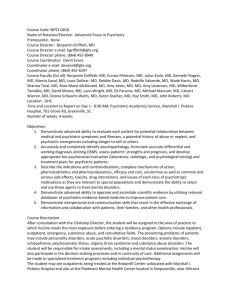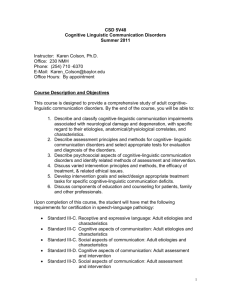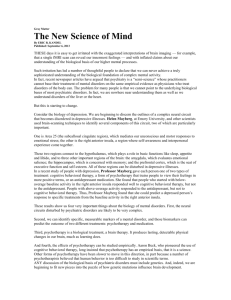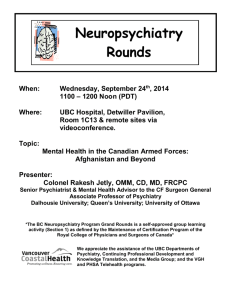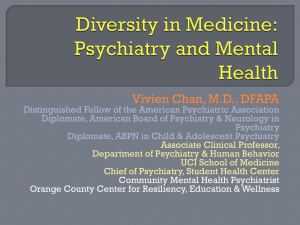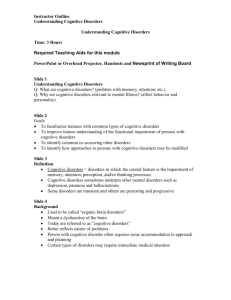Summary Neuropsychiatry
advertisement
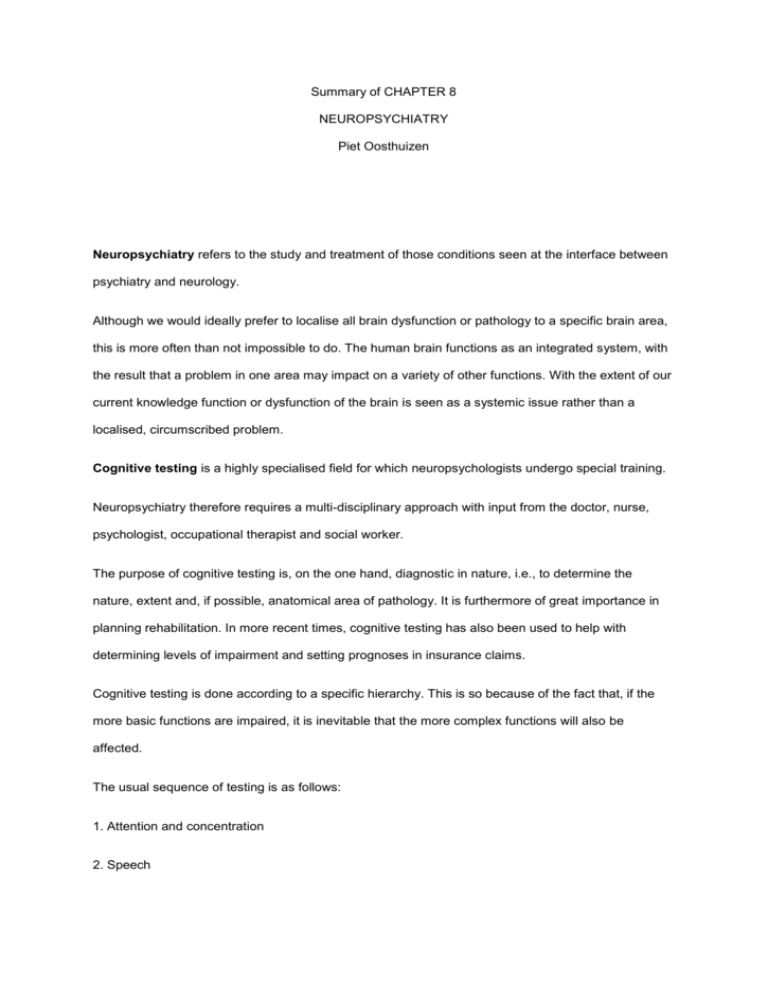
Summary of CHAPTER 8 NEUROPSYCHIATRY Piet Oosthuizen Neuropsychiatry refers to the study and treatment of those conditions seen at the interface between psychiatry and neurology. Although we would ideally prefer to localise all brain dysfunction or pathology to a specific brain area, this is more often than not impossible to do. The human brain functions as an integrated system, with the result that a problem in one area may impact on a variety of other functions. With the extent of our current knowledge function or dysfunction of the brain is seen as a systemic issue rather than a localised, circumscribed problem. Cognitive testing is a highly specialised field for which neuropsychologists undergo special training. Neuropsychiatry therefore requires a multi-disciplinary approach with input from the doctor, nurse, psychologist, occupational therapist and social worker. The purpose of cognitive testing is, on the one hand, diagnostic in nature, i.e., to determine the nature, extent and, if possible, anatomical area of pathology. It is furthermore of great importance in planning rehabilitation. In more recent times, cognitive testing has also been used to help with determining levels of impairment and setting prognoses in insurance claims. Cognitive testing is done according to a specific hierarchy. This is so because of the fact that, if the more basic functions are impaired, it is inevitable that the more complex functions will also be affected. The usual sequence of testing is as follows: 1. Attention and concentration 2. Speech 3. Memory 4. Gnosis : this refers to tests that evaluate the integrative functions of the senses. 5. Praxis : with the testing of praxis we evaluate the control of motor functions as an integrative function of the brain. 6. Executive functions : Executive functions include the ability of the individual to plan, set goals and function effectively, the ability to self-monitor behaviour, to adjust and make corrections in accordance with changes in the environment. The consequences of pathological incidents in the brain Pathology in the brain may, as in the case of most other organs, be caused by genetic, metabolic, endocrine, traumatic, infective or toxic effects. In the case of the brain pathology is usually expressed as either neurological or psychiatric disorders, which may on its part present with emotional or cognitive changes or both. Infective or traumatic incidents in the brain may, for instance, lead to personality changes which may or may not be reversible. Patients with head injuries can develop psychiatric syndromes such as depression, anxiety or psychosis, which can be indistinguishable from their classic psychiatric counterparts. Amnestic disorders The main clinical feature of this group of disorders is impairment in memory function without prominent abnormalities in the rest of the person’s cognitive abilities. Amnestic disorders should be distinguished from the dementias, where there are also impairments of memory, but with associated abnormalities in the rest of the cognitive functions as well as personality changes. The most important clinical syndrome in this group of disorders is the substance induced persistent amnestic syndrome, also known as Korsakoff’s syndrome. This condition results from chronic thiamine deficiency. The most common cause for thiamine deficiency is chronic alcohol abuse, but other causes of chronic malnutrition may also cause this condition. Epilepsy and psychiatry Psychiatric disorders are more common in patients suffering with epilepsy than in the general population. Some forms of epilepsy may be confused with psychiatric disorders. Neurosyphilis This condition is probably as old as humanity itself. Although the prevalence of neurosyphilis has declined markedly in the first world since the introduction of penicillin, there has recently been an upsurge in its incidence in association with the pandemics of AIDS and substance abuse. HIV/AIDS and psychiatry HIV is one of the most important diseases of our time. Although much progress has been made in the treatment thereof it remains an incurable disease with high morbidity and mortality. HIV is transmitted from person to person in the following high-risk situations : Sexual intercourse Intravenous substance abuse Intravenous blood and blood products Peri-natal transmission from mother to baby Transmission through the ingestion of infected milk during breastfeeding Neuropsychiatric manifestations of HIV/AIDS This usually involves problems with attention and concentration, psychomotor slowness, reduced tempo of information processing, problems with executive functions and problems with verbal memory (in particular the recall of stored information). As the condition progresses abnormalities may in appear in language, visuo-spatial tasks and may eventually lead to apraxias. The behavioural changes associated with these cognitive changes may range from apathy and depression to mania and psychosis. The introduction of the highly active antiretroviral therapies (HAART) has dramatically reduced the morbidity and mortality associated with HIV infection.
